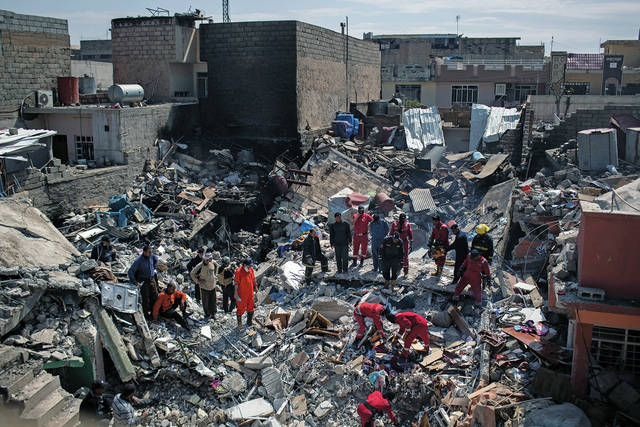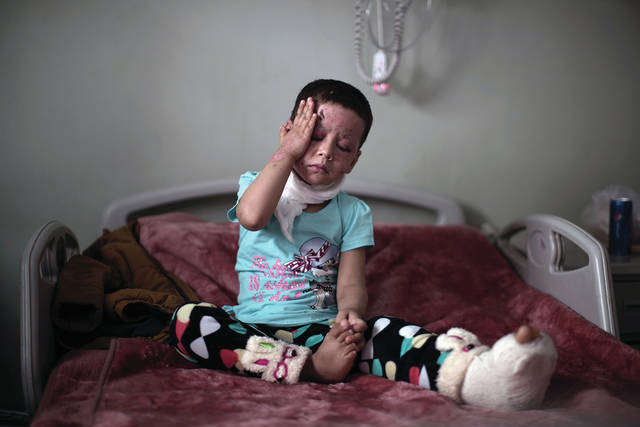CAIRO — After an American airstrike killed more than 100 Iraqi civilians in a house in the western part of Mosul in March, U.S. officials suggested the Islamic State group was to blame for the horrific toll, saying militants may have crammed the building with people, booby-trapped it with explosives, then lured in an airstrike by firing from the roof.
None of that happened, survivors and witnesses told The Associated Press, recounting the deadliest single incident in the months-long battle for the Iraqi city.
“Armed men in the house I was in? Never,” said Ali Zanoun, one of only two people in the building to survive the March 17 strike. He spent five days buried under the rubble of the building, drinking from a bottle of nose drops, with the bodies of more than 20 members of his family in the wreckage around him.
Instead, Zanoun and others interviewed by the AP described a horrifying battlefield where airstrikes and artillery pounded neighborhoods of western Mosul relentlessly trying to root out IS militants, leveling hundreds of buildings, many with civilians inside, despite the constant flight of surveillance drones overhead. Displaced families scurried from house to house, most driven out of their homes by IS militants, who herded residents at gunpoint out of neighborhoods about to fall to Iraqi forces and pushed them into IS-held areas.
U.S. Central Command refused to comment on the March 17 strike until its investigation is finished and released.
The AP spoke to seven witnesses, including neighbors and people who had been in the house, all of whom said no one was forced into the building, where dozens had taken refuge, thinking it would be safe amid the fighting raging around them. It was not on a main road and it was only two stories tall, making it unlikely IS militants would use it as a sniper’s position that might be targeted by an airstrike.
And, they said, the militants did not rig the building with explosives.
The building’s owner, Tayseer Abu Tawfiq, was a businessman well known for his generosity around his neighborhood, known as New Mosul. Whoever showed up, he squeezed into his house, alongside his own 14-member family — well over 100 people. A pregnant woman taking refuge there gave birth on March 15.
The next evening, Abu Tawfiq’s neighbor spoke to him and told him it wasn’t safe having so many inside.
“I can’t turn people away,” Abu Tawfiq replied, according to the neighbor, Abdullah Khalil Ibrahim.
Hours later, the house became a death trap.









